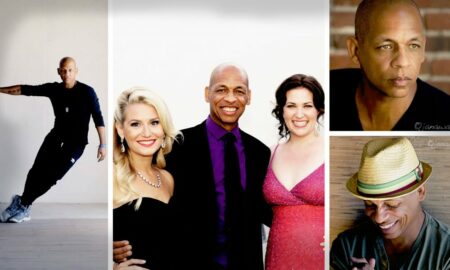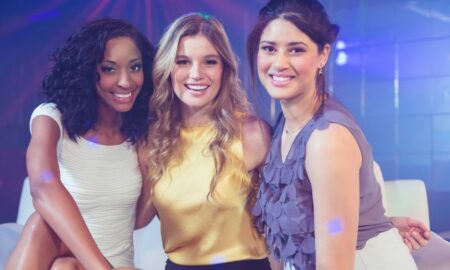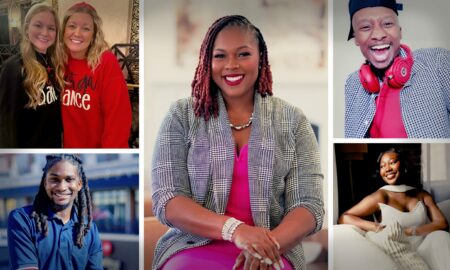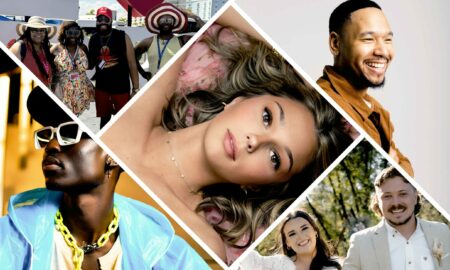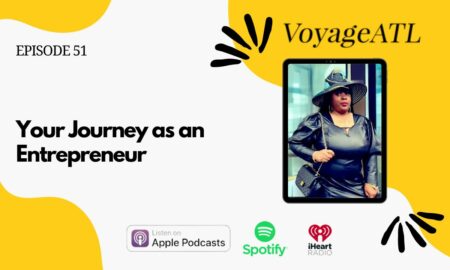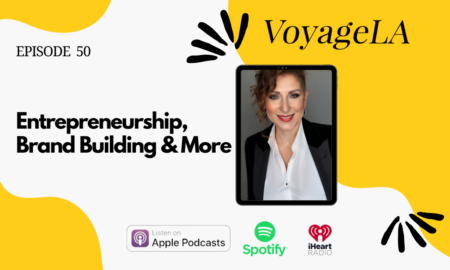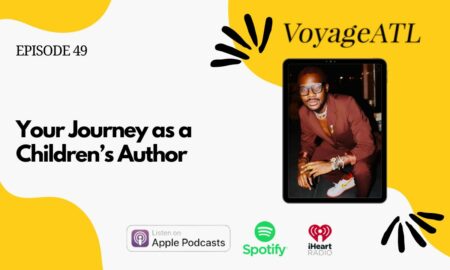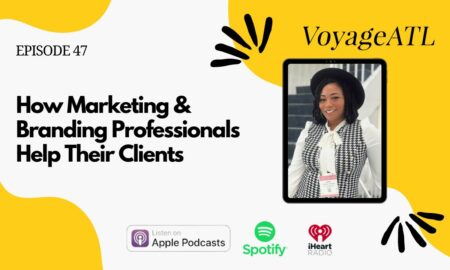Today we’d like to introduce you to Damon Scott.
Hi Damon, it’s an honor to have you on the platform. Thanks for taking the time to share your story with us – to start maybe you can share some of your backstory with our readers?
On November 7, 2020, I was invited to speak at an event in Atlanta. Because we are in the age of social media, the speech was recorded. When I received the footage, I pressed play while doing a million other things and I could hear myself speaking. However, when I viewed the footage, I thought to myself, “Who is that?” Honestly, for a moment, I did not recognize myself. I gained a lot of weight during the pandemic. I’m tall. If an image is captured of me from anyone standing directly in front of me, and I’m wearing a dark suit, I will appear to be in excellent physical condition. However, the video footage captured a 90-degree right profile of me speaking.
The footage was at odds with the image I saw in the mirror every day. I gained approximately 30 lbs. during the COVID outbreak. I’m an attorney, a consultant, a real estate agent and an educator. Someone always wants or needs something from me in an expedited fashion, and it’s an honor to be needed as a professional. However, effective advocacy requires effective self-care and I wasn’t doing that. Serving others led to me living a sedentary lifestyle that included lots of sitting, a poor diet, very little water, no time for exercise, and very little sleep. When I saw the footage, I was so disappointed. I had seen images of myself with the additional weight before, but only glimpses as I walked past the mirror. Dark suits helped me to hide the weight. I couldn’t hide from the footage, however.
After weighing my options for three weeks, I went public with my frustrations on Facebook on November 30 with a post that read, “You Can’t Fix What You Won’t Face.” It was finally time for me to lose weight, get in shape, and start a journey to achieve optimal health. That day, I started a plant-based diet. The next day I began the Marcothon Challenge, which required me to walk 3 miles per day during the month of December.
Today, January 4, 2021, which is 35 days later, I have lost 28 lbs. as a result of being on a plant-based diet, exercising and walking at least three miles per day, drinking lots of water, not sitting more than 1 hour at a time while working, and sleeping almost seven hours per night. The most important part is that my resting heart rate is down 21%. On November 30, 2020, my resting heart rate was 94 beats per minute. Today, my resting heart rate is 74 beats per minute. Clinically significant cardiovascular improvements from basic practices made me rethink my professional choices. I’ve learned a lot. Here are some of the more important lessons that I posted on Facebook throughout my journey.
Day 1: You can’t fix what you won’t face.
Day 3: Get healthy by any means necessary. If you don’t do it privately, shame yourself into doing it publicly.
Day 4: A habit consists of a trigger, a routine, and a reward and/or payoff. Learn yours and change them.
Day 5: A juice cleanse or detox is an excellent way to build energy.
Day 6: Study the work of Carol Dweck, PhD at Stanford. Have a growth mindset; don’t have a fixed mindset.
Day 7: Be transparent about imperfections. It forces you to own your mess and your message.
Day 8: You can’t out-exercise a bad diet.
Day 9: Have courage. It will be necessary to start, continue and finish your health and wellness journey.
Day 10: Find your tribe for support. I started Day One, Men’s Health & Fitness Challenge to have a safe space for men to share their health journey.
Day 12: Exercising is an act of self-care when you’re in shape and an act of self-forgiveness when you’re significantly out of shape.
Day 13: Poor sleep destroys the metabolism process.
Day 15: The side effect of getting in shape is losing the relationship of those who depend on your dysfunction.
Day 16: “Sugar is poison. Sugar is a chronic, dose-dependent, hepatotoxin.” – Dr. Robert Lustig, MD.
Day 18: Sugar has at least 75 different names.
Day 19: Plan for success. Know what you are going to do when you “hit the wall!”
Day 20: Drinking water has physical and cognitive benefits.
Day 21: Too much sitting leads to chronic conditions like diabetes, heart disease and brain fog.
Day 22: Cooking plant-based meals makes getting in shape sustainable.
Day 24: Plant-based diet supports endothelial function in blood vessels. Meat-based diets impair the same. This is the day when I noticed my resting heart rate had plummeted.
Day 25: Swimming is a highly effective way of burning calories with low impact.
Day 27: Inertia will keep you in motion once you’ve made it a practice of being in motion.
Day 28: Acute inflammation is healthy. Chronic inflammation leads to cancer, heart disease and diabetes.
Day 30: Subcutaneous fat is largely harmless. Visceral fat is the fat around your organs, and it is dangerous. It secretes cytokines which results in chronic inflammation and chronic conditions like diabetes, heart disease and cancer.
Today as I get back to work, my brain-fog is gone. I have healthy habits and I’m much more productive. I’m ready to conquer 2021 while staying on track with my health and wellness goals. As a healthy and happy lawyer, I’m much more valuable to my clients and students.
Alright, so let’s dig a little deeper into the story – has it been an easy path overall and if not, what were the challenges you’ve had to overcome?
There were two major challenges for me: (1) getting in shape during the holidays and (2) losing weight while managing significant stress. Getting in shape during the holidays was difficult because of the meals I was expected to have with my family. My family was keeping track of my progress on Facebook, so I managed to escape unscathed, for the most part. I went with vegan options instead of meat-based options. Also, any project that poses a significant learning curve while also involving significant risks triggers poor eating habits for me because I am a stress-related eater. Eating has always been a part of the problem solving process for me. I go in to analysis mode and I begin nibbling on salty, crunch snacks that are completely unhealthy. The lesson I detailed on Day 4 regarding knowing your triggers, understanding what a habit is and how to change them was instrumental in overcoming the challenge of becoming healthy while managing a significant amount of stress. I didn’t perfect the lessons learned from Day 4 until Day 19 which is when I began planning for success. The key is to have healthy options around before the stressful times hit. When I implemented that change, I found myself nibbling on Brussels Sprouts, almonds and broccoli during stressful times and not potato chips and pork rinds!
Can you tell our readers more about what you do and what you think sets you apart from others?
I’m a civil rights attorney resolving matters involving education discrimination. I fight violations of the Americans with Disabilities Act (ADA) and Section 504 of the Rehabilitation Act of 1973 (Section 504). Your readers should know that schools have a duty to accommodate students who present duly authorized orders for accommodations. It is a violation of federal law for a school to ignore or refuse a legitimate request for an accommodation. Students should not be ashamed to get accommodations if they need them. Legislation such as the ADA and Section 504 was created to ensure that the talents and gifts of everyone is well represented in society, including those with disabilities. Also, it is a violation of Section 504 for a federally funded program to discriminate against someone with a disability. If you have a disability, the United States of America, and the world, is incomplete without your gift. Legislation has been passed to ensure that you have a path to get your gift to the world. Please take advantage of that. We need to see your gift.
What sets me apart is that I was an award-winning educator before becoming an attorney. Fighting education discrimination cases is an extension of my career as an educator. I taught accounting for years at a college located in southwest, Atlanta, Georgia, near the West End: a community that was redlined by the
National Housing Act of 1934. Redlining is the deliberate exclusion of African-Americans and other minorities from the home finance process. (See
https://www.marketplace.org/2018/02/15/barriers-homeownership-still-exist-people-color/) You can still see the effects of redlining on that community today. My efforts were dedicated to pushing back against the effects of redlining by teaching students accounting because academic excellence tends to disrupt generational patterns of poverty, particularly in the field of accounting. Becoming a civil rights attorney is a continuation of that work because education-based inequities are most severe in underserved communities like those that have been redlined by the National Housing Act of 1934. My life’s work is to eradicate the impact of redlining on communities of color. I specifically want to eradicate the impact that redlining has on education. However, because redlining impacts homeownership, it significantly reduces the community’s access to wealth for business ownership. Most Americans hold their wealth in the form of home equity, which is used to finance businesses and education for their children. My goal is to help minorities gain better educational opportunities in addition to gaining access to capital to build wealth.
I am most proud of the impact I’ve had on my clients. I also fight insurance companies in personal injury cases to assist clients in re-ordering their lives after vehicle collisions and car accidents. For instance, months after the conclusion of a personal injury case, a client sent me a picture while standing in a meadow with a signpost in the ground that read, “Under Contract.” There’s a look that clients have at the end of a successful resolution of a case. The look is a combination of disbelief and immeasurable gratitude and it’s unmistakable. Every lawyer wants that look, and once you see it, every case comes down to being able to reproduce it because receiving that look means you’ve exceeded your client’s expectations. I am also the Founder of the Atlanta Small Business Clinic, Inc., which I use to help under-represented entrepreneurs push their pursuits forward for free. Again, this is yet another way I use economic empowerment to advance the cause of civil rights.
Finding a mentor has been critical to my success. I found my mentor through a family member. My advice is to use your friends and family to help you find a mentor. They have more contacts than you think, and they will speak highly of you to assist in landing an effective mentor. Also, use your mentors sparingly so you will have them during critical times. Every time you ask a question, provide a suggested solution. That will allow them to give you feedback on what you are thinking.
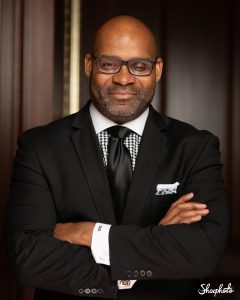
 Image Credits:
Image Credits:


